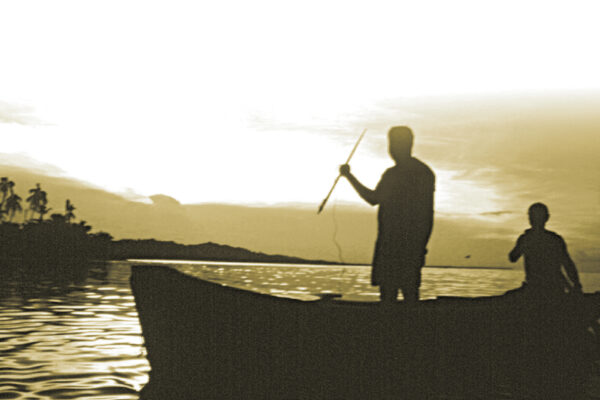
The First Populations
The bays and natural harbors of the southern Caribbean coast already appeared as places of refuge marked on maps pirates, Puerto Vargas, Old Harbour (Puerto Viejo) or Miami Beach, actual Beach Break. Until the nineteenth century these coasts were only transit routes without permanent populations, closest populations were the indigenous communities located in high Talamanca who rarely came down to the coast.
Since 1750 turtle fishermen start reaching the Southern Caribbean coast. These fishermen were of Afro – Caribbean origin and spoke English, who came rowing and sailing from Bocas del Toro. These coasts also started receiving Miskit Indians from Nicaragua’s coast, lured by the sea turtles. They erected temporary camps that were used during the fishing season between the months of March to September, where they harpooned green and hawksbill turtles, because of their valuable meat and shell.

For their subsistence they planted coconut, yucca, plantain and yam which they harvested the following season. To build their huts they used chonta wood for floors and walls, and for their roofs they used yolillo palms, very common in swamps, and ¨man reed¨ (kankibo) which they used to tie the pieces.
In 1828, one of these seasonal fishermen decided to permanently settle in the area, he was named William Smith, who along with his family, he built one of the camps located north of Punta Cahuita which ended up being his dwelling. This Afro-Caribbean who came from Bocas del Toro was followed by others, to name a few, Louis Hudson who established north of William Smith, another named Dixon who chose the south side of Punta Cahuita, William Shepherd who stayed in Puerto Vargas, Ezequiel Hudson Caldwell who preferred Monkey Point (Punta Mona), Horacio MacNish who settled in the north of Old Harbour (Puerto Viejo) and Peter Hansel in Manzanillo. Many of them came with their families, but others were paired with indigenous of Talamanca, and began a crossbreeding, which survives until today as a characteristic of its population.

These new settlers named the region inspired by its natural characteristics, Little Bay (Playa Chiquita), Grape Point (Punta Uva) which was abundant sea grape tree, Hone Creek for the abundance of palm trees known as hone, or Manzanillo which owes its name to a large manzanillo tree that was in that place and which died in the 40s. They chose to settle down near streams which later on were named after their family names, such as Kelly Creek (Kelly Creek).
At that time everything revolved around turtle fishing harpoons. They stood on their canoes from where they harpooned them, and then they were taken to the coast where they were kept alive for several days before being sacrificed so as to sell their products in Bocas del Toro. Since 1850 the African Caribbean families in the area increased, coming from other points of the Caribbean. Subsistence farming evolved and gave a surplus that was converted to currency exchange. They basically traded with coconut, its oil and cassava starch, which were transported in small rowing or sailing boats to Bocas del Toro or Greytown (San Juan del Norte). These boats were manufactured in one piece taken from a tree trunk, mainly from sandbox tree.

These journeys were difficult and risky, 12 hours to Bocas and two days to Greytown, until later on, the new port of Limon opened a new market. This fact contributed to the relative isolation of the population of the Southern Caribbean.
Forced by circumstances, they learned to maximize the resources that were offered by the generous nature. With the linden tree bark they made sandals and wove cradles, with the cottony balsa tree seed they did pillows and mattresses and with the wood of this tree they produced the first musical instruments. They also learned to develop their own liquors such as the ¨guarapo¨ made from corn, the guaro made from sugar cane or the ginger beer, made from a vine called chewstick mixed with ginger and sugar cane juice

On the other hand, wild animals were a rich source of food. In order to cook it was enough to find the ingredients in the mountains, sea or farm. From this continuous search the famous Rondon was born, in English run down, which means rummaging. It is a dish made of sea food and vegetables cooked in coconut milk.
These towns developed thanks to the innate ability of subsistence of its inhabitants, their strong solidarity spirit and above all the respect for nature that gave them sustenance.


Fotografias de Paco Salmerón
Texto de Juan Carlos Lorite y Paco Salmerón